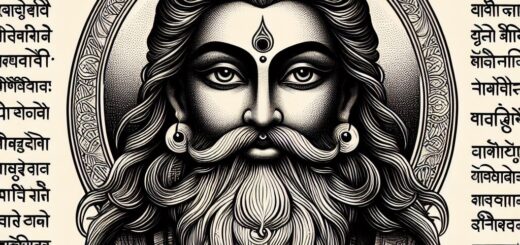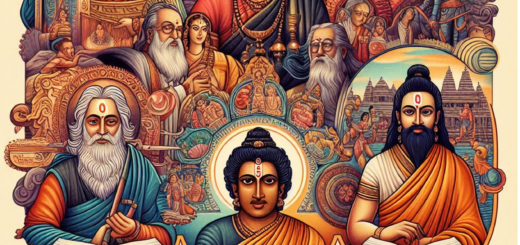The Geopolitical History of India: From Ancient Times to the Present

India has a long and complex geopolitical history, dating back to the Indus Valley Civilization in the 3rd millennium BCE. The country has been ruled by a succession of empires, including the Maurya Empire, the Gupta Empire, the Delhi Sultanate, and the Mughal Empire. India gained independence from the British Empire in 1947 and has since become one of the world’s leading economies and militaries.
Here is a brief summary of some of the key events in India’s geopolitical history:
- Ancient India: The Indus Valley Civilization, one of the earliest known civilizations, flourished in what is now northwestern India and Pakistan from 3300 to 1300 BCE.
- Classical India: The Maurya Empire, under the leadership of Ashoka the Great, united much of India in the 3rd century BCE. The Gupta Empire, which ruled from the 4th to 6th centuries CE, is considered to be a golden age of Indian culture and science.
- Medieval India: The Delhi Sultanate was established by Turkic warlords in the 12th century CE. The Mughal Empire, founded by Babur in 1526, ruled over most of India for over two centuries.
- British India: The British East India Company began trading in India in the 17th century and gradually expanded its control over the country. The Indian Rebellion of 1857 led to the dissolution of the East India Company and the direct rule of India by the British Crown.
- Independent India: India gained independence from the British Empire in 1947. The country has been involved in several wars with Pakistan, including the Kargil War in 1999. India has also conducted nuclear tests in 1974 and 1998.
- Modern India: India is now a major player in global affairs. The country is a member of the G20 and the BRICS group. India has also close ties with the United States and other Western countries.
India’s geopolitical history is shaped by its location, its size, and its diverse population. India is located in a strategically important region, bordered by China, Pakistan, and Bangladesh. The country is also home to over 1.3 billion people, making it the second most populous country in the world. India’s diversity is reflected in its many different languages, religions, and cultures.
India’s geopolitical history is complex and fascinating. The country has played a major role in global events for centuries and is poised to continue to do so in the future.
Geopolitical Timeline of India
Ancient India
- 3300-1300 BCE: Indus Valley Civilization
- 1500-500 BCE: Vedic Age
- 500-200 BCE: Rise of Magadha and Maurya Empire
- 200 BCE-200 CE: Kushan Empire
- 300-500 CE: Gupta Empire
During this period, India was a major center of trade and culture, and its geopolitical influence extended to Central Asia and Southeast Asia. The Maurya Empire, under the rule of Ashoka the Great, was the first to unite most of the Indian subcontinent under a single ruler. The Gupta Empire was another period of great cultural and economic flourishing.
Medieval India
- 600-1200 CE: Rajput Kingdoms
- 1001-1186 CE: Ghaznavid Empire
- 1192-1206 CE: Ghori Dynasty
- 1206-1526 CE: Delhi Sultanate
- 1336-1398 CE: Vijayanagara Empire
- 1526-1707 CE: Mughal Empire
During this period, India was ruled by a succession of dynasties, both Hindu and Muslim. The Delhi Sultanate and the Mughal Empire were the most powerful and influential, and their rule extended over much of the subcontinent. The Vijayanagara Empire was a major Hindu power in the south.
Colonial India
- 1600-1857 CE: East India Company
- 1857-1947 CE: British Raj
In the early 17th century, the British East India Company established trading posts in India. Over time, the company expanded its power and influence, and by the mid-19th century, it controlled most of the subcontinent. In 1857, there was a major rebellion against British rule, known as the Sepoy Mutiny. The rebellion was crushed, but it led to the British Crown taking direct control of India.
Independent India
- 1947-Present: Republic of India
India gained independence from the British in 1947. The country was partitioned into two dominions, India and Pakistan. India has since emerged as a major regional power and a leading member of the international community.
Geopolitical Challenges
India faces a number of geopolitical challenges today, including:
- Relations with Pakistan and China: India has long-standing territorial disputes with both Pakistan and China. These disputes have led to wars and military tensions.
- Terrorism: India has been a victim of terrorism for many years, perpetrated by both domestic and foreign groups.
- Water security: India shares its water resources with several neighboring countries, and there is a growing risk of water scarcity due to climate change and population growth.
- Energy security: India is dependent on imported oil and gas, which makes it vulnerable to supply disruptions.
Despite these challenges, India is well-positioned to continue its rise as a major global power. The country has a strong economy, a young and growing population, and a vibrant democracy.
The Geopolitical Landscape of Ancient India
The geopolitical landscape of ancient India was shaped by a number of factors, including its geography, its natural resources, and its trade routes. The Indian subcontinent is surrounded by mountains and seas to the north, south, and east, which made it relatively isolated from other parts of the world. However, it was also connected to Central Asia and Southeast Asia by trade routes through the Khyber Pass and the Bay of Bengal.
The Indus Valley Civilization, which flourished in the Indus River Valley from 3300 to 1300 BCE, was one of the first major civilizations in the world. It was a highly urbanized society with a sophisticated system of government and administration. The Indus Valley people traded extensively with other civilizations in the Middle East and Central Asia.
The Vedic Age, which began around 1500 BCE, was a period of great cultural and intellectual ferment. The Vedic people were nomadic pastoralists who migrated to India from Central Asia. They brought with them a new language and culture, which would eventually evolve into Hinduism.
The rise of Magadha in the 6th century BCE marked the beginning of a new era in Indian history. Magadha was a kingdom located in the eastern Ganges Plain. It was ruled by a succession of powerful and ambitious rulers, who expanded their control over much of the subcontinent.
The Maurya Empire, founded by Chandragupta Maurya in 322 BCE, was the first empire to unite most of India under a single ruler. The Maurya Empire reached its zenith under the rule of Ashoka the Great (273-232 BCE). Ashoka was a brilliant military strategist and a wise ruler. He expanded the empire’s borders and promoted Buddhism throughout the subcontinent.
The Gupta Empire, founded by Chandragupta I in 320 CE, was another period of great cultural and economic flourishing. The Gupta Empire controlled much of northern and central India. It was a time of peace and prosperity, and the arts and sciences flourished.
The geopolitical landscape of ancient India was constantly changing. The rise and fall of empires led to the formation of new kingdoms and alliances. However, India’s central location and its abundant natural resources made it a major center of trade and culture throughout its history.
Here are some of the key geopolitical factors that shaped the history of ancient India:
- Geography: India is a vast and diverse country with a variety of geographical features, including mountains, rivers, plains, and deserts. This geography made it difficult for any single empire to control the entire subcontinent.
- Natural resources: India is rich in natural resources, such as fertile land, minerals, and water. This wealth attracted invaders from Central Asia and the Middle East.
- Trade routes: India was connected to other parts of the world by trade routes through the Khyber Pass and the Bay of Bengal. This trade brought India wealth and prosperity, but it also made it vulnerable to attack.
- Religion: Hinduism and Buddhism are the two major religions of India. These religions have played an important role in shaping the country’s culture and society.
The geopolitical landscape of ancient India was complex and ever-changing. The factors listed above played a major role in shaping the history of the subcontinent.
The Geopolitical Landscape of Medieval India
The geopolitical landscape of medieval India was shaped by a number of factors, including the rise of Islam, the decline of Buddhism, and the constant warfare between Hindu and Muslim kingdoms.
The Arab conquest of Sindh in 712 CE marked the beginning of Islam’s arrival in India. Over the next few centuries, Islam spread rapidly throughout the subcontinent. The Ghaznavid Empire (977-1186 CE) and the Ghori Dynasty (1192-1206 CE) were two of the most powerful Muslim empires in medieval India. They raided and conquered large parts of northern India.
The Delhi Sultanate (1206-1526 CE) was the first Muslim empire to rule over much of India. The Sultanate was founded by Qutubuddin Aibak, a former slave of Muhammad Ghori. The Sultanate reached its zenith under the rule of Alauddin Khilji (1296-1316 CE). Khilji was a brilliant military strategist who expanded the Sultanate’s borders and defeated the Mongols in several battles.
The Vijayanagara Empire (1336-1398 CE) was a major Hindu power in the south. It was founded by Harihara I and Bukka Raya I, two brothers who escaped from the Delhi Sultanate. The Vijayanagara Empire was a powerful force in South India for several centuries. It resisted Muslim invasions and promoted Hinduism and Telugu culture.
The Mughal Empire (1526-1707 CE) was the most powerful empire in medieval India. It was founded by Babur, a descendant of Timur and Genghis Khan. The Mughals expanded their control over much of the subcontinent and ruled over a diverse population of Hindus, Muslims, and Sikhs. The Mughal Empire was a period of great cultural and economic flourishing.
The Mughal Empire began to decline in the early 17th century. This was due to a number of factors, including internal rebellions, financial problems, and the rise of new regional powers. The Mughal Empire finally collapsed in 1707 CE with the death of Aurangzeb.
The geopolitical landscape of medieval India was characterized by constant warfare between Hindu and Muslim kingdoms. The rise of Islam and the decline of Buddhism also played a major role in shaping the region’s geopolitical landscape.
Here are some of the key geopolitical factors that shaped the history of medieval India:
- The rise of Islam: The arrival of Islam in India in the 7th century CE led to the rise of powerful Muslim empires, such as the Ghaznavid Empire, the Ghori Dynasty, the Delhi Sultanate, and the Mughal Empire. These empires controlled much of northern and central India for several centuries.
- The decline of Buddhism: Buddhism was the dominant religion in India during the early medieval period. However, it began to decline in the 12th century CE due to a number of factors, including the rise of Islam and the Hindu revival. The decline of Buddhism led to the decline of Buddhist kingdoms, such as the Palas and the Senas.
- Warfare between Hindu and Muslim kingdoms: There was constant warfare between Hindu and Muslim kingdoms throughout the medieval period. This warfare was due to a number of factors, including religious differences, territorial disputes, and the desire for resources.
- The rise of regional powers: In the 17th century CE, a number of regional powers emerged in India, such as the Marathas and the Sikhs. These powers challenged the authority of the Mughal Empire and eventually led to its collapse.
The geopolitical landscape of medieval India was complex and ever-changing. The factors listed above played a major role in shaping the history of the subcontinent.
The Geopolitical Landscape of Colonial India
The geopolitical landscape of colonial India was shaped by a number of factors, including the British East India Company’s expansion of power, the British Crown’s assumption of direct control, and the rise of Indian nationalism.
The British East India Company arrived in India in the early 17th century to trade in spices and other goods. Over time, the company expanded its power and influence, and by the mid-19th century, it controlled most of the subcontinent. The company’s rule was characterized by exploitation and oppression, and it led to a number of uprisings, including the Sepoy Mutiny of 1857.
After the Sepoy Mutiny, the British Crown took direct control of India. The British Raj, as it was known, lasted from 1858 to 1947. During this period, the British implemented a number of reforms, including the construction of railways and telegraph lines, the introduction of a Western-style education system, and the establishment of a civil service. However, the British also maintained a tight grip on power and suppressed Indian dissent.
The rise of Indian nationalism in the late 19th and early 20th centuries challenged British rule. The Indian National Congress, founded in 1885, was a major force in the nationalist movement. The Congress demanded self-government for India and launched a number of non-violent protests, such as the Civil Disobedience Movement of 1930-31.
The Second World War weakened British power and accelerated the Indian independence movement. In 1947, India gained independence from the British. The country was partitioned into two dominions, India and Pakistan.
The geopolitical landscape of colonial India was characterized by the following factors:
- British expansionism: The British East India Company’s expansion of power in India was driven by economic and strategic motives. The British were eager to control India’s rich resources and to secure their trade routes to Asia.
- British rule: The British Raj was a period of both progress and oppression. The British implemented a number of reforms, but they also maintained a tight grip on power and suppressed Indian dissent.
- Indian nationalism: The rise of Indian nationalism in the late 19th and early 20th centuries challenged British rule. The Indian National Congress demanded self-government for India and launched a number of non-violent protests.
- Partition: India’s independence in 1947 was accompanied by the partition of the country into two dominions, India and Pakistan. This was a traumatic event that led to widespread violence and displacement.
The geopolitical landscape of colonial India was complex and ever-changing. The factors listed above played a major role in shaping the history of the subcontinent.
The Geopolitical Landscape of Independent India
The geopolitical landscape of independent India has been shaped by a number of factors, including the country’s strategic location, its diverse population, and its growing economic power.
India is located at the crossroads of Asia, Africa, and the Middle East. This strategic location has made India a major player in regional and global affairs. India is also home to a diverse population of over 1.3 billion people. This diversity has shaped India’s foreign policy, which has traditionally emphasized non-alignment and multilateralism.
In the early years of independence, India’s focus was on internal development. However, in the post-Cold War era, India has become more assertive on the global stage. India has played a leading role in regional organizations such as the South Asian Association for Regional Cooperation (SAARC) and the Bay of Bengal Initiative for Multi-Sectoral Technical and Economic Cooperation (BIMSTEC). India has also been active in multilateral organizations such as the United Nations and the World Trade Organization.
India’s growing economic power has also boosted its geopolitical influence. India is now the sixth largest economy in the world and is expected to become a major economic power in the coming decades. India’s economic power has given it more leverage in its dealings with other countries.
India’s geopolitical landscape is also shaped by its relations with its neighbors, particularly Pakistan and China. India has a long-standing rivalry with Pakistan over the disputed territory of Kashmir. India also has a tense relationship with China over their border dispute in the Himalayas.
Despite these challenges, India has emerged as a major regional power and a rising global power. India’s strategic location, its diverse population, and its growing economic power give it a unique position in the world.
Here are some of the key geopolitical challenges that India faces today:
- Territorial disputes: India has territorial disputes with both Pakistan and China. These disputes have led to wars and military tensions.
- Water security: India shares its water resources with several neighboring countries, and there is a growing risk of water scarcity due to climate change and population growth.
- Energy security: India is dependent on imported oil and gas, which makes it vulnerable to supply disruptions.
- Economic inequality: India has a large and growing population of poor people. Economic inequality is a major challenge that India needs to address.
- Regional instability: India’s neighborhood is a volatile region. India needs to work with its neighbors to address the challenges of terrorism, extremism, and poverty.
Despite these challenges, India is well-positioned to continue its rise as a major global power. The country has a strong economy, a young and growing population, and a vibrant democracy.
Modern India: Geopolitical Significance
India has emerged as a major player in global affairs in recent decades. This is due to a number of factors, including:
- Economic growth: India is one of the fastest-growing economies in the world. The country’s GDP has grown at an average rate of 7% per year over the past two decades. This economic growth has made India a more attractive destination for foreign investment and trade.
- Military modernization: India is also modernizing its military. The country is now the fourth-largest military spender in the world. This military modernization has made India a more significant force in regional and global security affairs.
- Strategic location: India is located in a strategically important region, at the crossroads of Asia, Africa, and Europe. The country also has a long coastline and access to major shipping routes. This strategic location gives India a significant advantage in global affairs.
- Soft power: India has a rich culture and heritage, which gives it a significant amount of soft power. Indian soft power is reflected in the popularity of Indian films, music, and cuisine around the world.
India is a member of the G20 and the BRICS group, two important international forums. India also has close ties with the United States and other Western countries. India is a key ally of the United States in the Indo-Pacific region.
India’s geopolitical significance is reflected in its growing role in global institutions and its close ties with major powers. India is also playing an increasingly important role in regional security affairs.
India’s Geopolitical Priorities
India’s geopolitical priorities include:
- Maintaining good relations with its neighbors: India is surrounded by a number of countries with which it has complex relationships. India’s top priority is to maintain good relations with its neighbors, especially China and Pakistan.
- Promoting regional security: India is a key player in regional security affairs. India is working with other countries in the region to promote peace and stability.
- Strengthening its relationship with the United States: The United States is India’s most important strategic partner. India is working to strengthen its relationship with the United States in order to counter the growing influence of China in the Indo-Pacific region.
- Becoming a global leader: India is aspiring to become a global leader. India is working to increase its influence in international institutions and to play a more active role in global affairs.
Conclusion
India is a rising power with a growing geopolitical significance. India is a key player in regional and global security affairs. India is also working to strengthen its relationship with the United States and to become a global leader.




























